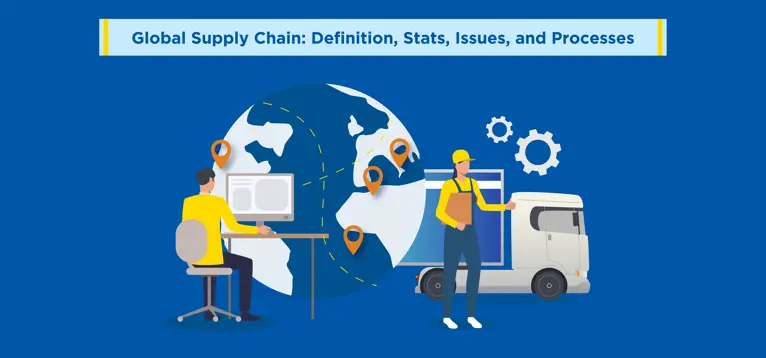Global supply chain is a complex phenomenon as it spans several countries. Hence, the number of factors affecting the supply chain also increases. This article helps you understand how the global supply chain works and how it is different from standard supply chain management.
Global Supply Chain Definition
A global supply chain refers to an international network of supply chain components. These include suppliers, manufacturers, and logistics. Global supply chain management relies on four areas of focus. These include:
- Marketing
- Supply Management
- Logistics Management
- Operations Management
Marketing refers to aspects concerning customers and competitors. To develop a global supply chain you need to consider the location of your target markets. You also need to consider the presence of competitors in those locations.
Supply management concerns the availability of raw materials for manufacturing. It also concerns the availability of manufacturing resources. These include space, equipment, labour, and so on. In supply management, you also need to consider the relative cost of sourcing and manufacturing products in different markets.
Logistics management refers to the storage and transportation of goods. Global logistics and supply chain management requires you to consider several factors. These include international trade regulations, shipping costs, storage resources, labour charges, and so on.
Operations management refers to the management of supply chain processes in different countries. Global operations and supply chain management require sourcing, process management, labour management, equipment management and so on.
As companies begin targeting international audiences, global supply chains become more important. It brings a lot of benefits for a company in terms of cost management, operations and diversity.
Supply Chain Global Statistics
Here are a few important global supply statistics that can help you understand the current state of the industry.
Global Supply Chain Pressure Index
Global supply chain pressure index has risen significantly after the covid-19 pandemic. This rise is due to several reasons. The most significant among them are supply shortages and rising shipping costs.
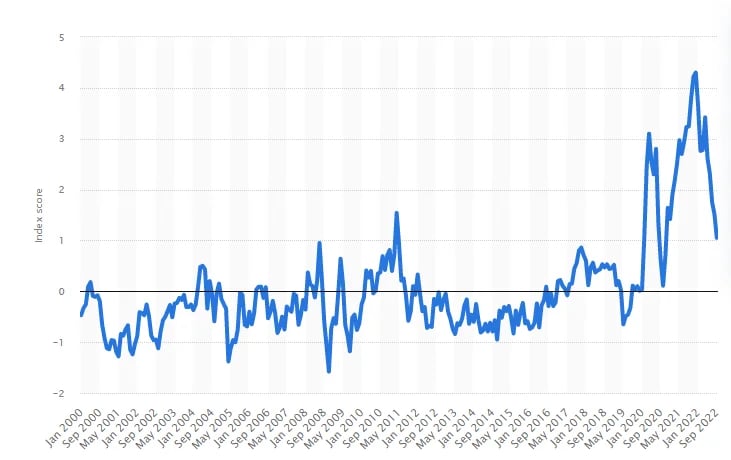
Global Supply Chain Market Size
The global supply chain market size stands at 19.5 billion in 2022. It is expected to grow at a CAGR of 14% by 2024.
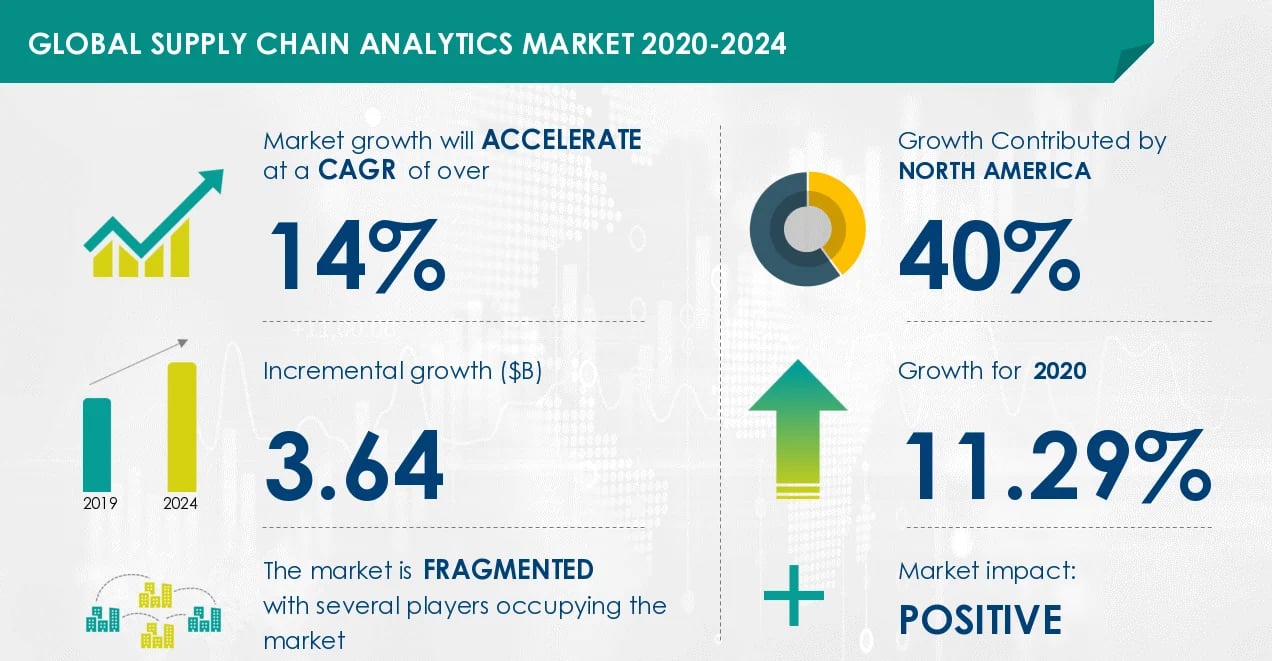
Global Supply Chain Market Share
The global supply chain is occupied by companies of several industries. The largest share is held by 4 industries. These include manufacturing, logistics, food and beverages, and retail & eCommerce.
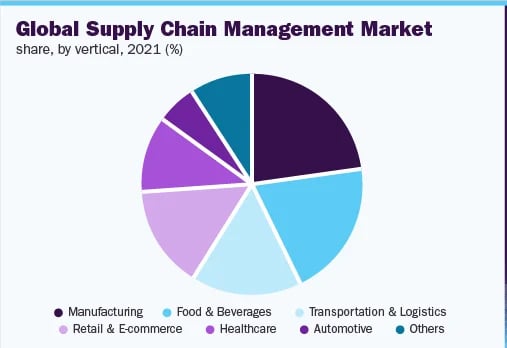
Global Supply Chain Priorities
Business executives are giving high priority to expenditure management in supply chains. The second highest priorities include category management for products and supply risk management.
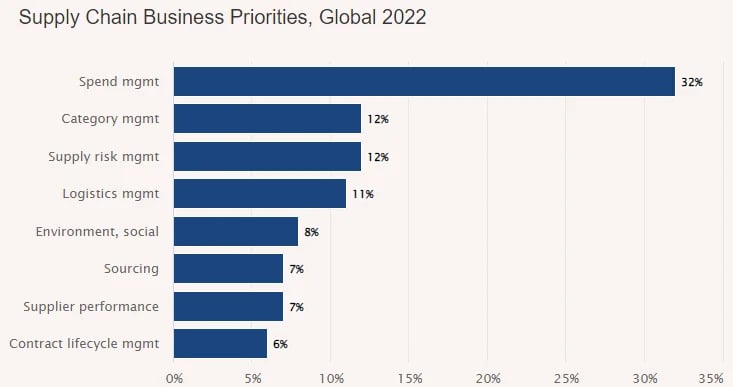
Global Supply Chain Challenges
Majority of businesses are facing global supply chain issues concerning technology and data management. These components are necessary to gain supply chain visibility and streamline operations.
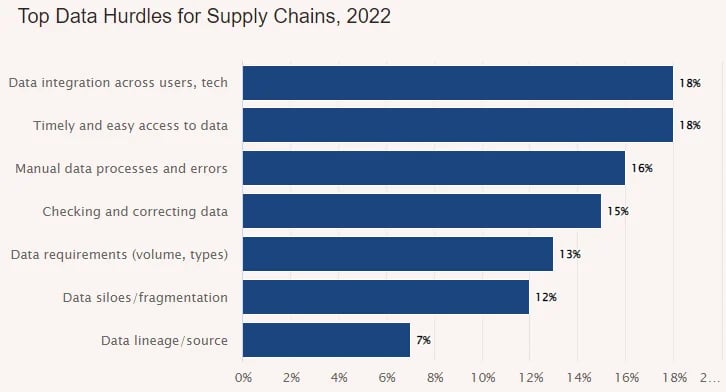
Global Supply Chain Process
A global supply chain management process is not very different from a regional SCM. The key difference is the locations of the components.
Based on the location of the supplier and manufacturing unit, there are 5 ways you can arrange your global supply chain. In the below list, Country A represents the target market. Country B represents any location outside of Country A. Country C represents any nation except Country A and Country B.
- Supplier and Manufacturing in Country A
- Supplier in Country B and Manufacturing in Country A
- Supplier in Country A and Manufacturing in Country B
- Supplier and Manufacturing in Country B
- Supplier in Country B and Manufacturing in Country C
In the first and fourth methods, the supplier and manufacturer are in the same country. Hence, you can reduce the cost of transportation. However, in the fourth method, both components are overseas. So you need resources for visibility, quality control, and remote operations management.
In methods two and three, you get control over one of the components. If the supplier is overseas, you need resources to ensure that raw materials are delivered as per your requirements and on time. If the manufacturer is overseas, you need to ensure that they produce the required quantity of products without compromising quality.
Methods two, three and five, have at least one component overseas. Hence, you will have to incur an additional cost of transportation. But, in method five you also need resources to control the operations and output of both components. So it will be the most resource-intensive global supply chain method.
Aside from this, you also need to consider the cost of transportation for shipping products to your customer’s location. Additionally, you will also need to facilitate the storage of the products in those locations. These overseas storage facilities will act as buffer zones between distribution and order fulfilment.
The overall supply chain process still remains the same. But, global supply chain management is dependent on several factors that are missing or less severe in a local supply chain. These include international trade, compliance management, supply chain viability, transparency, and so on.
Global Supply Chain Issues
Owing to distance and international borders, a company might face a variety of global supply chain issues. Some of the biggest problems include:
- Long Lead Times
- Supply Chain Visibility
- Shipment Delays
- Fluctuating Prices
- Environmental Uncertainties
- Regional Compliance
- International Trade Compliance
- Compliance and Accountability
- Quality Control
- Transactional Costs
You can see global supply chain examples of multinational companies to see how they overcome these issues.
Benefits of Global Supply Chain Management
Despite the risks and challenges, companies still thrive to achieve a streamlined global supply chain. This is because a global supply chain also has a lot of advantages
Multinational Market
A global supply chain is crucial for targeting customers in different countries. You can sell more products and expand your operations. This also allows you to capitalize on different opportunities that might be missing in a given country.
Lower Costs
If you are selling more products, you also need to produce a larger volume. According to economies of scale, a greater volume can help you reduce costs. You can buy raw materials in bulk to get a lower price per unit. Similarly, you can also reduce the cost of transportation by shipping larger volumes.
In a global supply chain, you can also expand manufacturing operations in the target market. This way you can reduce the distance between the source of production and the customer location. Hence, you have to save money on logistics.
Supplier Diversity
A global supply chain also brings the opportunity to diversify your source of supply. You can source your raw materials from different countries. This will protect you against unforeseen supply shortages in one country.
Demand Management
A global supply chain gives you the opportunity to diversify your manufacturing operations as well. If one of your manufacturing units falls short. Then you can offset it by supplying products from another manufacturer. This will help you meet market demands regardless of shortages in a country.
Risk Management
A global supply chain also serves as a hedge against environmental, social and political upheavals. If your operations are damaged in one country, you can divert your resources to another country. This will ensure that your company remains operational regardless of problems in one nation. A global supply chain also brings flexibility as you can diversify your assets in different markets.
Conclusion
Global supply chain management is complex. But, it also comes with several benefits. When you plan a global supply chain for your company you have to consider several possibilities. Then you have to conduct a cost-benefit analysis for each possibility. This will give you the optimum global supply chain strategy for your company.
Image Sources: Statista, Businesswire, Grandviewresearch,Practicalecommerce
